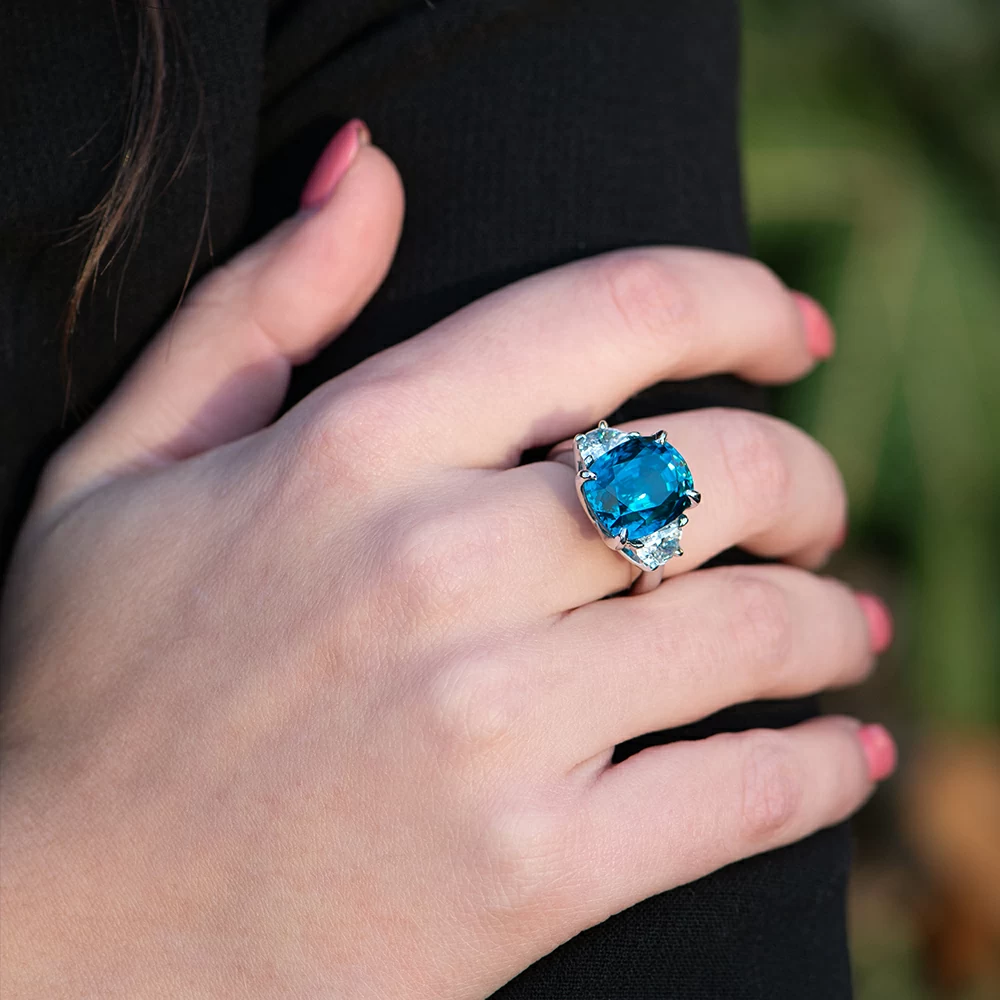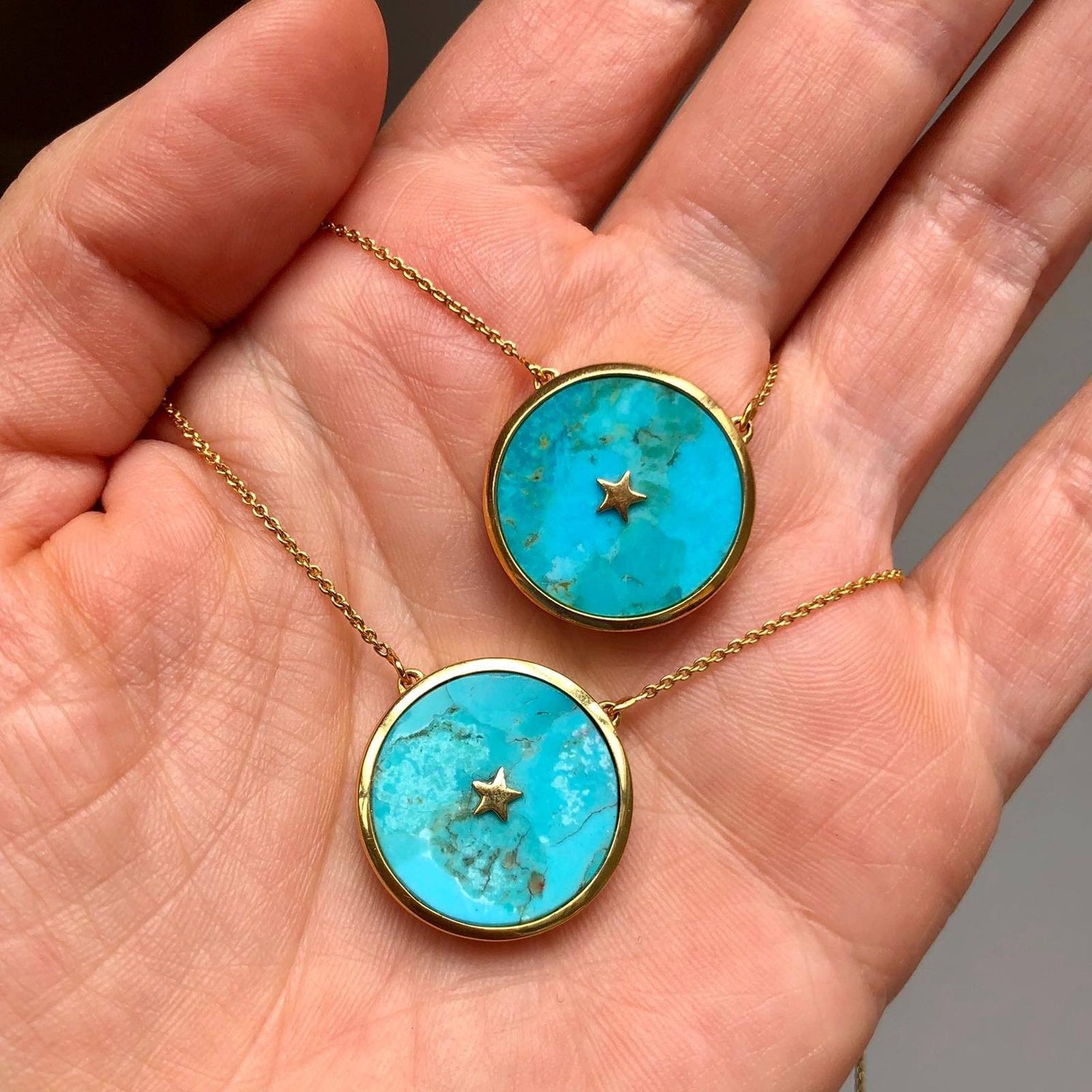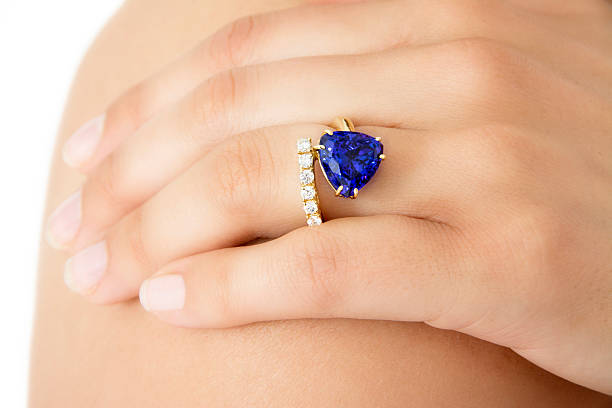December is a month filled with joy, celebration, and the enchantment of winter. December babies have choices of birthstones- the alluring Zircon, handsome Turquoise, and graceful Tanzanite. The December birthstones hold a special place in the hearts of those born in this month. It is believed to bring good fortune, love, and prosperity to its wearer. These captivating gemstones have captivated humanity for centuries with their mesmerizing hues and symbolic meaning.
As one of the oldest gemstones known to mankind, Zircon holds a timeless beauty that spans over 4 billion years. Its name derives from the Persian word 'Zargun', meaning gold colored. It has a wide range of colors, in which blue Zircon is the December birthstone, it is formed during heat treatment. Also, it's not just the array of colors that make Zircon so alluring; it's also its exceptional glittering quality and brilliance akin to diamonds. Light dancing upon its surface creates a breathtaking display that captures attention from every angle.

Zircons are so durable and resistant to chemical attack that they seldom disappear after they are formed by crystallization from magma or metamorphic rocks. The original crystal may survive geological events as evidenced by additional rings of zircon that grow around it like tree rings. zircon grain found in western Australia's sandstone dates back 4.2–4.3 billion years, and we know the Earth is only 4.56 billion years old from meteorites. Geologists are searching for some of the oldest rocks in the continental crust, for the zircons within them, and for the clues the zircons contain about the formation of the planet. These are found in beach sands around the world, mainly in Australia. Western Australia, Victoria, South Asia, Tanzania, and Cambodia are the other sources of Zircon.
Zircon is a common mineral found in igneous and metamorphic rocks.
Hardness on Moh’s scale of 7.5
Long exposure to sunlight may cause them to lose their color.
It can resist acid attacks except sulphuric acid.
It has a wide range of colors from intense green, blue, red, yellow, and orange. Heat treatment is used to change the color of Zircon.
The chemical name is zirconium silicate- ZrSiO4.
Transparent Zircon is a semi-precious gemstone and it is affordable.
It has a high specific gravity and refractive index.
Since the Middle Ages, it has been known to bring good fortune. Those who are mesmerized by its brilliance might find it an ideal gift for December babies. Today, zircon is associated with increased strength and stamina. It is also believed to enhance creativity and calmness. Zircon is also used for other purposes instead of jewellery.
Used in the decorative ceramics industry.
Used in refractories and foundry casting.
Used in nuclear fuel rods, catalytic fuel converters, and in water and air purification systems.
Turquoise, the next birthstone of December, is a gemstone that captivates with its opaque blue-to-green color. Not only is it a stunning stone, but it also holds deep cultural and spiritual significance. Throughout history, turquoise has been considered a holy stone by various civilizations. It has been revered as a bringer of good fortune. Its vibrant hues have adorned the jewellery of ancient Egyptians, Native Americans, and many other cultures around the world. The name "turquoise" itself comes from the French word "Turquois," which means Turkish. This is because the gemstone was first introduced to Europe through trade routes that passed through Turkey. Its popularity quickly spread due to its unique beauty and enchanting color.

In rocky gaps, mineral-rich water seeps into the rock and forms turquoise. As time passes, only the minerals remain as turquoise. Blue and green shades of turquoise are caused by copper in the gem. There is no single crystal of gem-quality turquoise in nature. It is an aggregate of tiny micro-crystals that is composed of a porous mineral aggregate called a cryptocrystalline rock.
It is a hydrous phosphate of copper and aluminum with the chemical formula CuAl6(PO4)4(OH)8·4H2O.
Common impurities are iron and calcium.
Hardness on Moh’s scale is 5 to 6 range
Colors vary from Bright blue, sky-blue, pale green, blue-green, turquoise-blue, apple-green, and green-gray.
Iran, Sinai, the USA, and Japan are the sources of turquoise
Since ancient times, this gemstone has been prized as a decorative gem.
Next December's birthstone is Tanzanite gem, a blue and violet variety of mineral Zoisite, boasting a unique and alluring color palette that is truly mesmerizing. As you explore the world of tanzanite, let its deep blue-violet hues inspire you with their elegance and grace. Whether adorning a piece of jewelry or simply admiring its natural splendor, tanzanite is sure to captivate your senses and remind you of the wonders that lie within our planet's treasures.

Tanzanite's story begins in 1967 when it was found in the hills of Merelani in northern Tanzania. This recent discovery sparked excitement among gem enthusiasts worldwide, as this extraordinary gemstone had never been seen before. Its vibrant hues and remarkable clarity quickly caught the attention of renowned jewelry company Tiffany & Co., who named it "tanzanite" to honor its country of origin. Since then, tanzanite has soared in popularity and become highly sought after by collectors and jewelry connoisseurs alike. Its rarity adds to its allure, as it can only be found in one place on Earth - the enchanting hills of Merelani. Tiffany & Co. played a pivotal role in introducing tanzanite to the international market, becoming its primary global distributor. Their recognition and promotion helped establish tanzanite as a gemstone of exceptional beauty and value.
It is calcium aluminium silicate and the chemical formula is Ca2Al3(SiO4)3(OH).
Color ranges from royal blue, indigo, violet to purple.
With pleochroism, the gemstone exhibits different colors depending on what angle it is viewed from.
Hardness 6.5 to 7 on the Mohs scale.
Light passes through Tanzanite with minimal obstruction since it is usually transparent to translucent
A gemstone's dispersion is measured by its ability to separate white light into spectral colors or fire. Tanzanite exhibits moderate to high dispersion.
It has a desirable and reflective vitreous to subadamantine luster
It is regarded as one of the world's most beautiful and benign gems, due to its wholesome properties and benign properties. The metaphysical, spiritual, and healing properties of tanzanite have been recognized for centuries, and many people still believe in their power today, in addition to its use in designing high-end jewelry. Among the valuable benefits of tanzanite stone is its ability to provide great energy, calmness, and happiness. Additionally, this extraordinary stone is useful for enhancing self-esteem, enhancing safety.
In conclusion, the December birthstones - Zircon, Turquoise, and Tanzanite - are truly remarkable gemstones that hold deep meaning and beauty. Each stone has its unique characteristics and qualities that make them special.
Zircon, with its brilliant sparkle and wide range of colors, symbolizes prosperity and wisdom. It is believed to bring clarity of mind and promote self-confidence.
Turquoise, known for its striking blue-green hue, is associated with protection and good fortune. It has been cherished by ancient civilizations for centuries for its healing properties and ability to ward off negative energy.
Tanzanite, a relatively new addition to the gemstone world, captivates with its mesmerizing violet-blue color. It is said to enhance spiritual growth and promote emotional balance.
Whether you are born in December or simply drawn to these enchanting gemstones, incorporating Zircon, Turquoise, or Tanzanite into your jewelry collection can add a touch of elegance and meaning. Embrace the beauty of these birthstones as they remind us of the magic that lies within each individual's journey.
